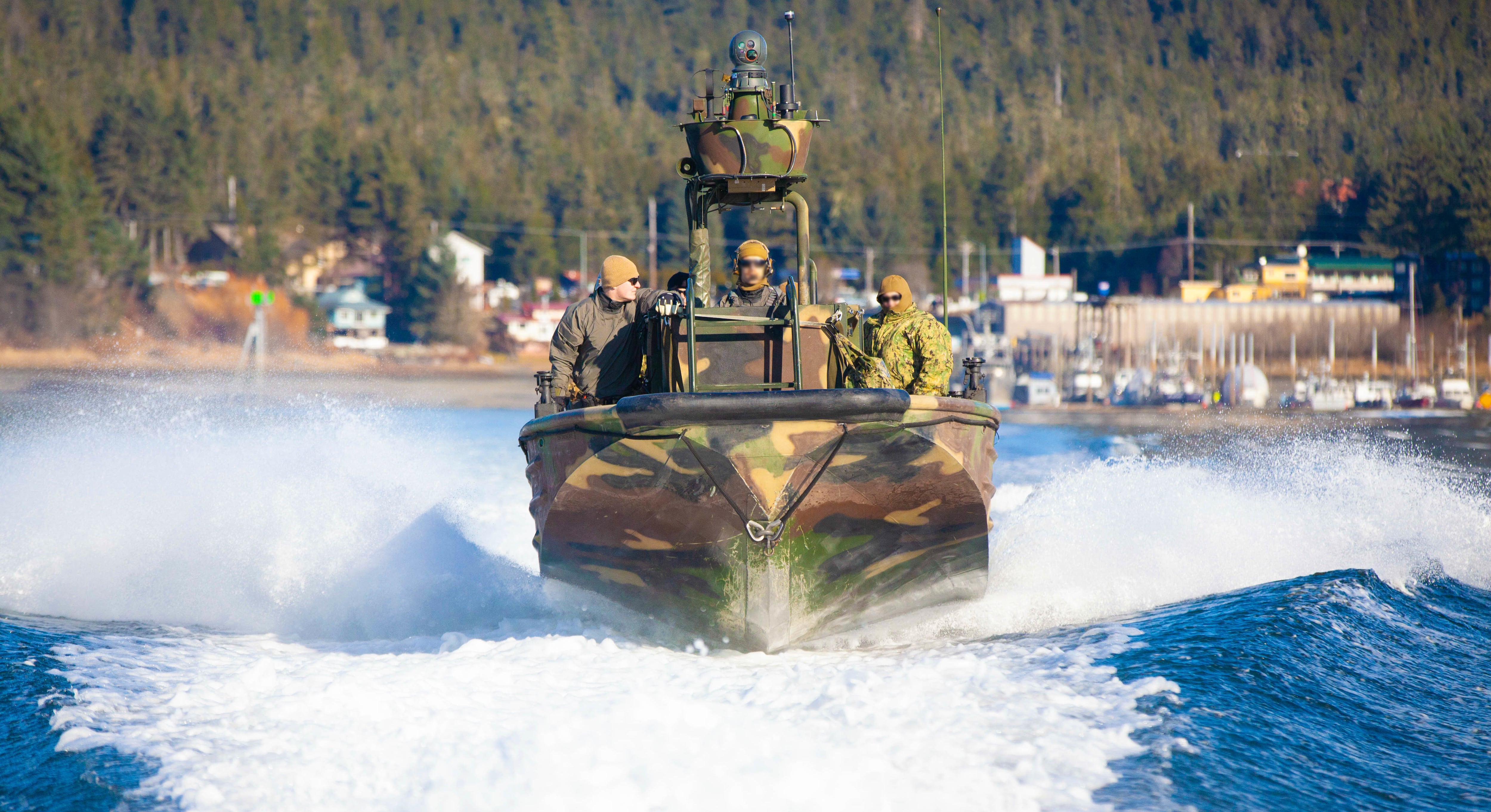TAMPA, Fla. — From lightening the load for combat divers to producing autonomous watercraft to adding in data-based technology to its systems, the office in charge of special operations maritime assets has one objective: access.
That’s how U.S. Navy Capt. Randy Slaff, program executive officer for U.S. Special Operation Command’s maritime technology unit, summed up the host of equipping needs for his team on Tuesday at the SOF Week conference.
Access for these special operators means getting in and out of an objective, or observing that area remotely and silently for weeks or months ahead of a mission.
“Ensuring that access is how we maintain our joint advantage,” Slaff said.
For the divers who carry as much as 425 pounds when they splash down, that means fewer and lighter systems that do more. Key areas to improve upon include finding an alternative to lithium ion batteries currently in use, and enhancing regenerative carbon dioxide scrubbing for the diver’s rebreather apparatus.
They also need lightweight thermal regulation — essentially better wet and dry suits.
And underwater communications could be better; operators can’t wait until they surface or reach their objective to find out whether something in their area has changed. They need real-time data transfer at every stage of the mission both to “see” their environment and to report what they see back to the command, officials have said.
For watercraft both above and below the water’s surface, Slaff’s staff seeks more variety in the payload those boats and submersibles carry, as well as ways to automate tasks onboard. Those systems include the SEAL Delivery Vehicle; Combatant Craft variants Assault, Medium, Heavy and Riverine: and the dry combat submersible and uncrewed surface vehicles that extend sensor ranges for threat detection.
The SEAL Delivery Vehicle has seen its legacy platform, the SDV MK 8, replaced in recent years with the SDV MK 11, which has a greater range, higher payload, and more advanced communications and navigation, according to information provided by Special Operations Command.
Officials expect the Heavy variant of the Combatant Craft Assault to go into production in fiscal 2024, while the Medium version will start production in late fiscal 2025.
The Assault version is currently under production, according to Slaff’s staff presentations.
To get “eyes” ahead of those speedy boats, the command will begin production of the Combatant Craft Forward Looking Infrared camera, which will bolt onto new watercraft variants going forward.
Some of those boats may be uncrewed — or at least have automated piloting — as the command seeks to integrate such systems, especially in the littoral region where water meets land.
While those are key to manned missions, the teams need ongoing intelligence regarding happenings across the high seas and nearby. The main problem now is sensors that have the endurance to gather intel without a human require refueling or the replacement of batteries.
Right now, 12-hour sensors are what’s available, but Slaff’s team needs versions that can endure for weeks or months, he said.
Todd South has written about crime, courts, government and the military for multiple publications since 2004 and was named a 2014 Pulitzer finalist for a co-written project on witness intimidation. Todd is a Marine veteran of the Iraq War.








